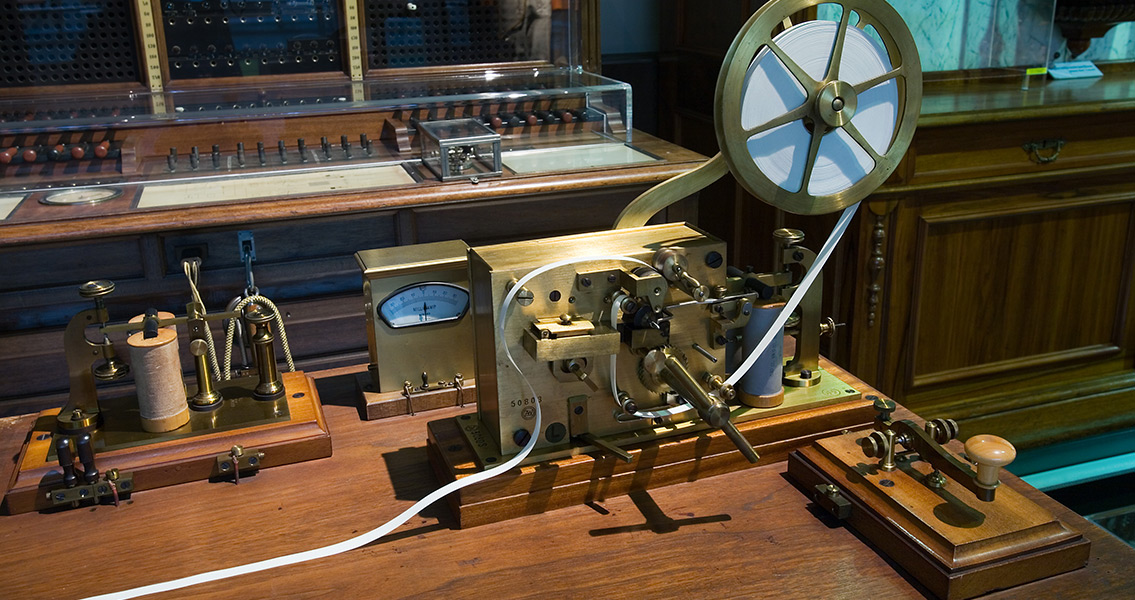On 6th January 1838 Samuel Morse’s revolutionary telegraph system was demonstrated for the first time at the Speedwell Iron Works in Morristown, New Jersey. Within a few years of the initial demonstration a series of telegraph lines would be strung across the United States and the Atlantic, completely changing the nature of long distance communication.
Morse Demonstrates Telegraph Machine
Morse was not the lone inventor of the telegraph, the device was the culmination of the work of multiple scientists and engineers. Morse was crucial in refining the technology and securing the funding and support to get it widely distributed. By the end of the nineteenth century telegraph lines could be found in North and South America, Europe, Africa, and Asia, heralding the start of the information age.
Before the telegraph long distance communication had been possible, but it was extremely limited. Postal services and messengers could send information over long distances and even across oceans, but they were slow, taking days or weeks for messages to reach their recipients. Quicker methods had existed from the times of ancient Greece and China, such as smoke signals and drumbeats, which could transmit messages across large distances but were dependent on good weather and a clear line of sight.
A more direct ancestor of the telegraph was the electronic semaphore. Developed in the 1790s, it was based on a series of large hilltop stations with arms which could be moved to signal different letters and numbers. Each station had two telescopes to read messages over large distances. Although a vast improvement on smoke signals and drum beats, semaphore could still be rendered useless in adverse weather conditions.
Aided by two crucial developments in the understanding of the applications of electricity- the principles of electromagnetism and the invention of the battery- two groups of scientists began working independently of each other to create new communication systems. In the early 1830s a British team of Sir William Cooke and Sir Charles Wheatstone developed a telegraph system with five magnetic needles that could be moved around a panel of numbers and letters using an electric current.
The American team of Morse, Leonard Gale and Alfred Vail developed a single circuit telegraph. The key difference between the British and American systems was that the American was much more practical, requiring only one cable between locations, whereas the British one was much larger and more complicated. The telegraph created by Morse and his team simply needed an operator to push a key down to complete the circuit of a battery. Central to its operation was the language of communication Morse developed and which still bares his name. Morse Code is a system of dots and dashes used to represent letters and numbers, allowing simple messages to be transmitted easily.
In 1843 Morse and his associates received funding from Congress to set up and test their telegraph system between Baltimore and Washington DC. On May 24th 1844 the system was completed, and the first message was successfully transmitted from Morse to Vail. Morse Code and the telegraph would go on to form the basis of long distance communication for the next century, and lay the principles for globalised communication.
Image courtesy of Wikimedia commons user: Jorge Royan

